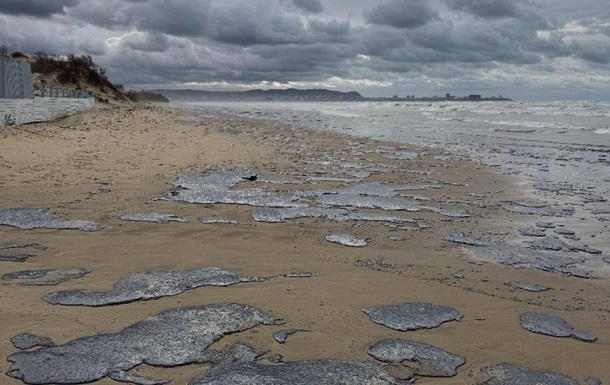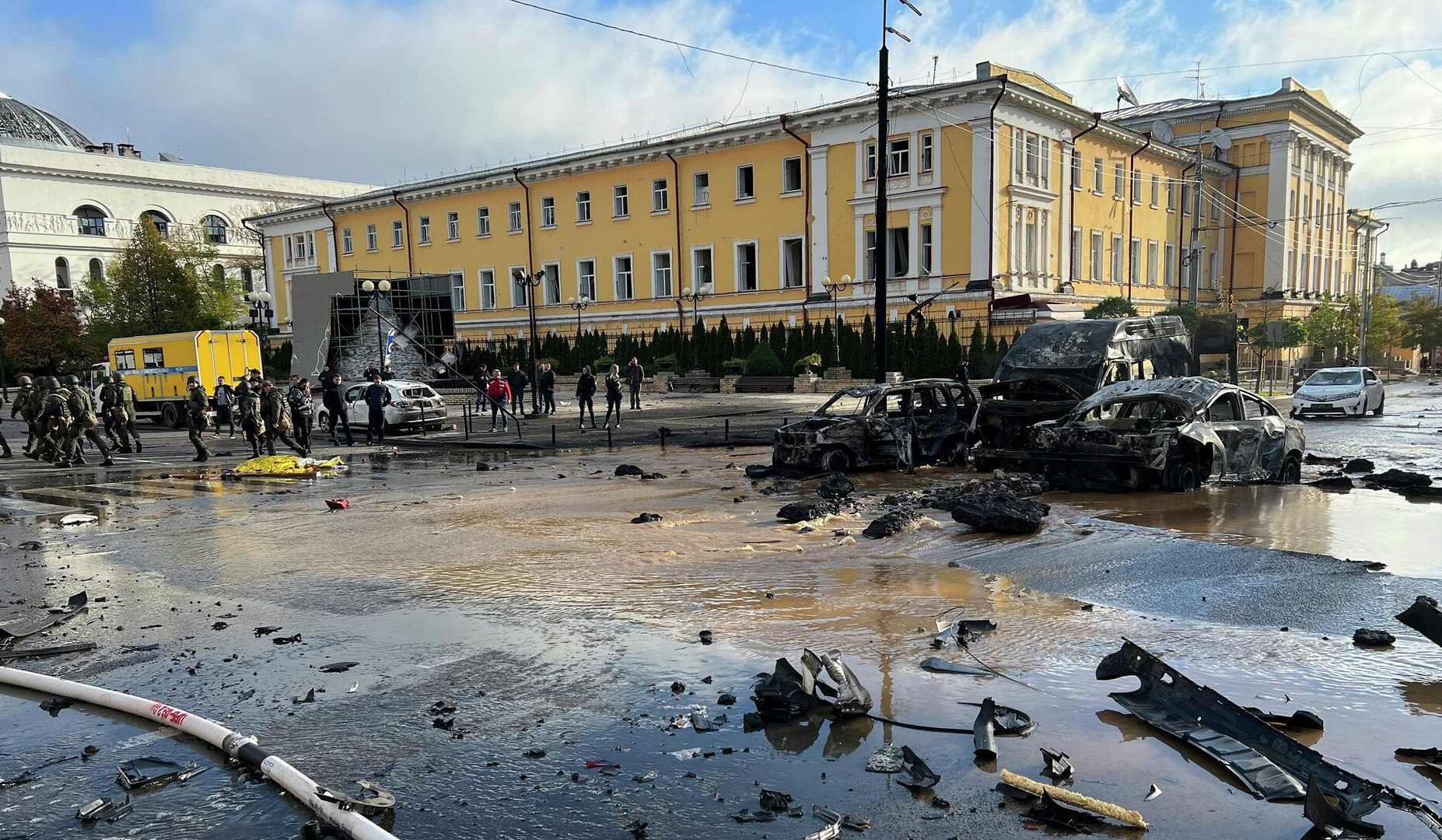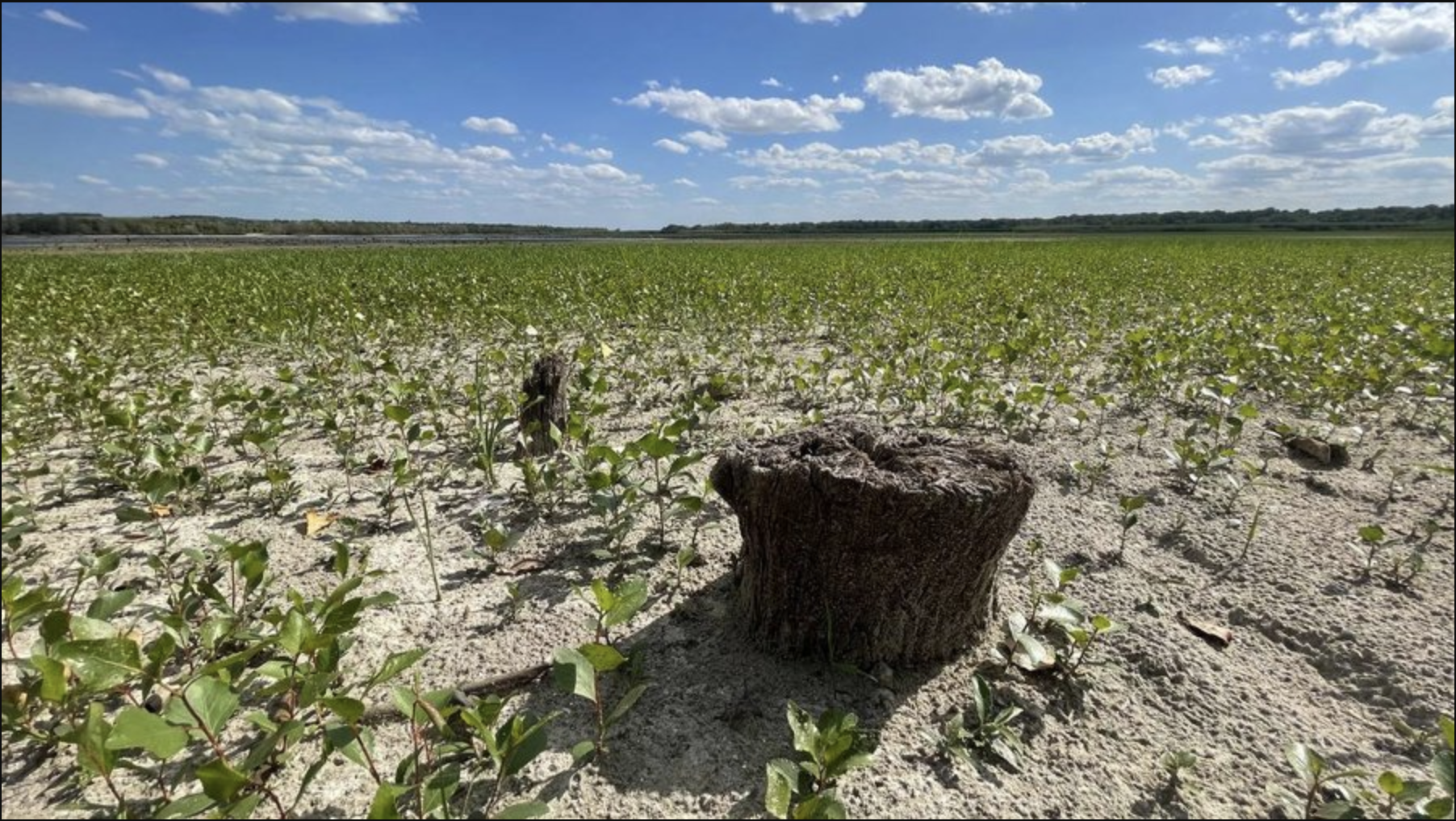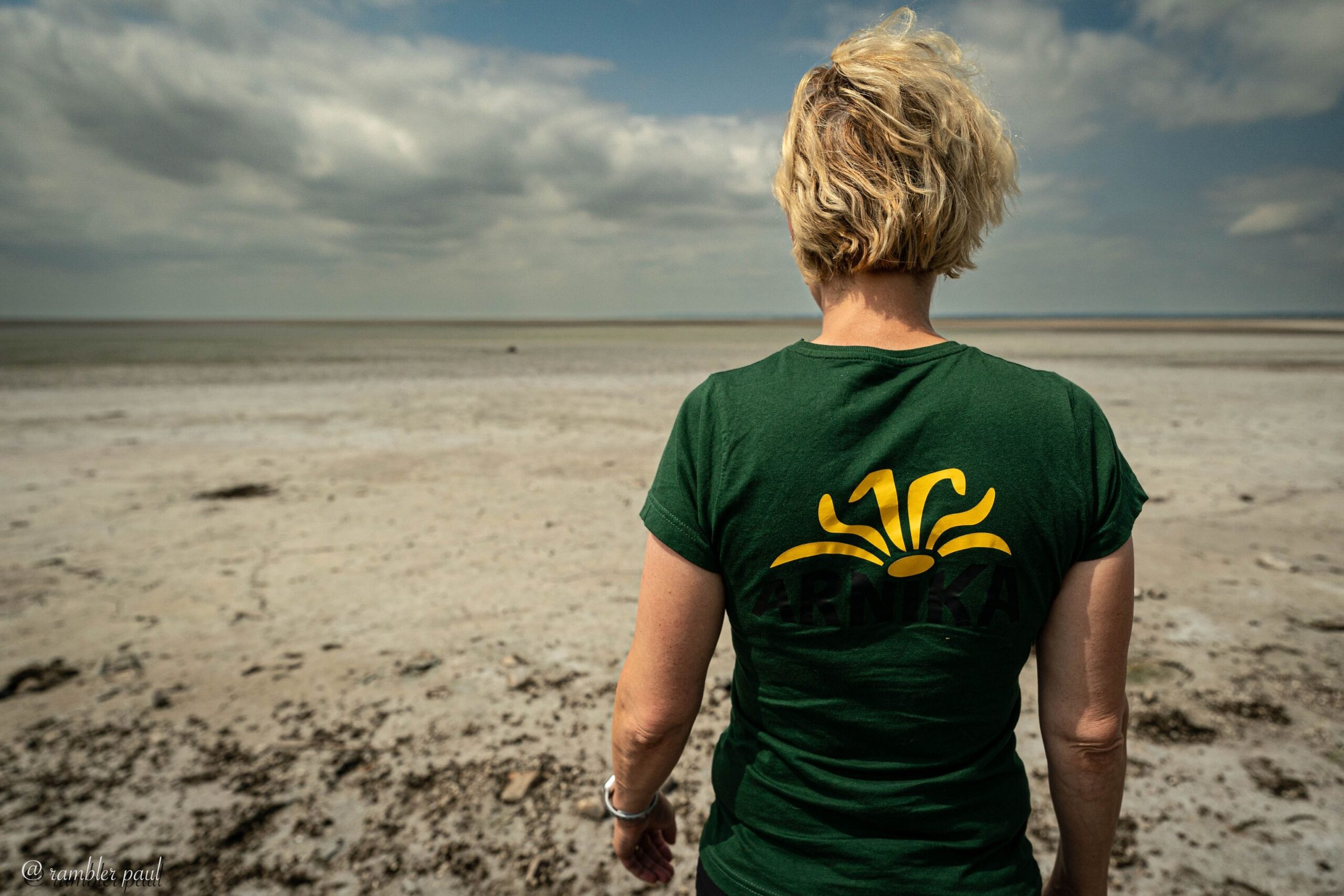Alexej Ovchinnikov
Each month, the UWEC editorial team shares highlights of recent media coverage and analysis of the Ukraine war’s environmental consequences with our readers. As always, we welcome reader feedback, which you can leave by commenting on texts, writing to us (editor@uwecworkgroup.info) or contacting us via social networks.
Consequences of the oil spill in the Black Sea for Ukraine and other Black Sea nations
Two Russian tankers ran into trouble on December 15, 2024 in the Kerch Strait during stormy weather, resulting in a large spill of М-100 heavy fuel oil, known in Russia as mazut. Each tanker was transporting more than 4,000 tons of oil. Both of the vessels split in two, but while one sank, the crew of the second managed to run the stern aground. It is not yet clear how much mazut has escaped into the sea, but reports continue to come in of fresh deposits along the coastline of Russia’s Krasnodar Territory. Data shows that Black Sea currents have also carried oil pollution into the waters around Crimea. The danger of М-100 is that it settles to the bottom in cold temperatures but may rise in the summer when the Black Sea warms up. The pollution is therefore likely to be long-term in nature.
In a previous UWEC Work Group investigative article, Eugene Simonov linked these tanker accidents with Russia’s “shadow fleet,” and noted potential environmental threats stemming from military ships sunk during the war. “Shadow fleet” is the term used for the sanctions-busting vessels used by Russia for trading oil products. These ships often fail to meet international transportation standards and therefore pose a danger.
The December catastrophe is being compared with the sinking of the Volgoneft-139, a tanker of the same type which broke in two in 2007, also in the Kerch Strait. That accident resulted in the spilling of 2,000 tons of mazut, four times smaller than the spill in December 2024. In 2007, a staggering 11 vessels sank, some of which were carrying a large cargo of sulfur (the Volnogorsk was transporting 2,436 tons, the Nakhichevan around 2,000 tons). At that time the head of the National Ecological Center of Ukraine called the Black Sea “a slow-ticking time bomb”, referring to the long-term consequences of the oil spill and sulfur pollution. After the accident in 2007 Ukraine filed a lawsuit against Russia for $1.5 billion. However, we have been unable to find out whether this claim was successful.
In wartime it is very difficult to obtain information about the real consequences of pollution. This is especially true when it comes to occupied territories such as Crimea. There is little openly accessible information about the scale of pollution on and around the peninsula, and volunteer clean-up activity along the Crimean coast is restricted. However, satellite monitoring does record pollution. For example, on January 4 the Sentinel-1 satellite recorded pollution of two square kilometers near Feodosia and 0.25 square kilometers in the vicinity of Cape Takil. Ukrainian specialists continue to collect data with the help of the Sentinel-1, TerraSar-X and PAZ satellites.
A trilateral online meeting was held between representatives of Ukraine, Romania and Bulgaria in mid-January with the aim of discussing joint action to monitor the consequences of the catastrophe in the Black Sea. Ukraine also made an appeal to the secretariats of relevant UN Convention fora, the United Nations Environment Program (UNEP), UNESCO, the European Union and the International Marine Organization (IMO). On January 27, the consequences of the oil spill in the Black Sea were considered at a meeting of the IMO Subcommittee on Pollution Prevention and Response.
“We are continuing our observations, preparing an appeal to the European Commission and awaiting a tough reaction from the international community,” said Svitlana Hrynchuk, Ukraine’s minister of the environment. “This is not the first situation of this kind with Russian tankers. Russia is ignoring international marine law. However, to ignore this accident now is to allow it to happen again in the future.”
By the end of January, deposits of mazut had already been recorded in the Odesa region. This was reported by Ivan Rusev, an employee of the Tuzlovskiye Limany National Park, located southwest of Odesa. Patches of mazut were discovered in the Katranka recreational zone located near the Danube Biosphere Reserve and the Tuzlovskiye Limany National Park. A representative of Tuzlovskiye Limany National Park reported having already collected four kg of light fractions of mazut found on the shoreline on about January 26.
Natalia Gozak, director of the Ukrainian office of Greenpeace, says that the Odesa region is not expected to be significantly affected due to its distance from the site of the disaster. However, certain impacts are possible, including changes to the migration patterns of birds, fish, and marine mammals. It may take 10-12 years to fully eliminate the consequences of the disaster in the Black Sea.
A bird was found covered in oil in Tuzlovskiye Limany National Park on January 9. Unfortunately, it was not possible to save it. Similar cases of birds covered in mazut have been documented in other countries – in Georgia, for example. Many of them die.
It is impossible to calculate the number of birds suffering from oil pollution as a result of the spill. Unfortunately, despite the active and productive work being done in the immediate area by volunteers, many birds die even after being rescued, cleaned and released into the wild. For example, after 160 great grebes were released in Anapa (a city on Russia’s Black Sea coast bordering Georgia) 60 were found dead the next day. According to ornithologists, birds are often released back into the wild too early before their plumage is again fully waterproof. Ukrainian animal rights organization UAnimals reports that 61 dolphins have died as a result of the oil spill. In the period from December 15 to 22 alone, Russian environmentalists found the bodies of 10 dead dolphins in the Krasnodar region. And the damage done to the Black Sea’s unique ichthyofauna is yet to be calculated.
Dealing with the consequences of December 15 will be very challenging, and will ideally involve the collaboration of all countries in the Black Sea basin. Ukraine is already establishing contact with Romania, Bulgaria and Turkey for joint monitoring. Unfortunately, Georgia has issued no statement on its involvement, and whether Russia is ready to join this process is something of a rhetorical question. Expressing willingness to compensate for the damage caused by the oil spill would be a step in the right direction, as well as abandoning its shadow fleet and acting in accordance with international standards for cargo transportation. According to Svitlana Hrynchuk, one month after the disaster the cost of the damage is preliminarily assessed at $14 billion. These funds should be directed primarily to cleaning up the damage and creating effective mechanisms to prevent such tragedies from recurring.
Developing compensation mechanisms for the war’s environmental damage
Whether the damage caused by the mazut spills in the Kerch Strait will be considered for Russia’s future reparations to Ukraine is a question that has not yet been discussed. However, compensation mechanisms are still being developed.
The Register of Damage for Ukraine (RD4U) was founded in 2023. It is intended to become the main institution for determining and receiving compensation from Russia for damage caused during the war. This includes environmental damage, as well as damage related to the violation of citizens’ rights to a healthy and clean environment. In 2024, as the Ukrainian organization Environment People Law reports, rules and regulations for the compensation register were established, along with a coordination platform for interaction with civil society.
Around 80 organizations took part in the first online meeting of the Coordination Platform, which was held on December 16. As RD4U’s executive director Markiyan Kliuchkovskyi explained, approved submission procedures currently exist for all 45 categories. However, applications are currently being accepted for just one category, “Damage or destruction of residential real estate”. As of the day of the meeting, 832 applications submitted for this category had been deemed acceptable and in accordance with the registry procedure.
The register contains two categories that are directly related to environmental damage: “Environmental damage” and “Depletion of or damage to natural resources”. When the NGO Environment People Law inquired about when applications for this category would be accepted, RD4U representatives responded that at present there are no clear dates; it depends on technical and regulatory issues and that all information will be provided on the register’s website in due course.
It is extremely important that projects funded by compensation take into account and are aimed at protecting the environment and Ukraine’s green recovery. The UWEC Work Group has said on numerous occasions that the recovery period may be more difficult for nature than the “hot phase” of the war. Among other things, the challenge is linked to the extraction and use of resources for the construction of new infrastructure, cities and housing.
Sanctioning the ‘shadow fleet’ and the oil trade to prevent environmental disasters
One way of putting economic pressure on Russia is to tighten sanctions on trading in oil and oil products. In principle, this could help avoid new environmental disasters. Moscow’s shadow fleet is not made up of invisible ships, after all. It merely exploits loopholes in the regulatory system that allow Russia to use other vessels to circumvent sanctions and continue to increase its trade in oil products. If these loopholes are closed, the risks will also be reduced. Coordinated action by all countries is necessary and a task which has yet to be achieved.
Razom We Stand has published a new appeal to mayors of European cities to deprive the aggressor of oil revenues. The authors of the appeal, which has already been signed by 37 environmental organizations from around the world, point out that oil remains the main source of income for the Russian government. In 2024, it even grew by 42% in volume, outstripping gas to become one of the key components of Russia’s wartime economy. At the same time, Moscow is making active use of a loophole for selling refined oil products through third countries. According to a recently published investigation into Georgia’s participation in this mechanism, 99,000 tons of so-called “Georgian oil” were sold in Spain in 2023-2024. This data is not only not reflected in Georgia’s national statistics database – the country simply does not produce oil in such volumes. This is just one example of Russia’s circumvention of sanctions. Another is the infamous shadow fleet.
Since economies around the world have shown their overwhelming dependence on Russian oil, environmental organizations see the solution in reducing the demand for oil in cities through the development of energy-efficient mobility programs and citizen awareness. If there is no demand for oil, it will be unprofitable to buy or sell it. Russia will therefore lose its main source of income, income that it is using to finance its war in Ukraine. It will be an added bonus that energy-efficient projects will make cities more comfortable for residents.
New study published on environmental degradation in southern Ukraine caused by explosive weapons
A recent report by Norwegian People’s Aid and CEOBS describes the impact of the fighting on the environment, agriculture and infrastructure of the Kherson and Mykolaiv regions. After analyzing soil, water and biodiversity, the researchers concluded that work on restoring and rehabilitating these areas needs to begin as a matter of priority. Pollution levels are extremely high, which has a negative impact on both the environment and human health.
As part of that study, researchers collected samples and conducted satellite analysis of areas affected by the use of explosive weapons. For example, in the town of Snihurivka in the Mykolaiv region, critical infrastructure was destroyed during the war, including treatment facilities, industrial and agricultural enterprises and a railway station. Samples showed high levels of heavy metals and hydrocarbons in the soil and water. The situation has also been aggravated by the destruction of the Kakhovka dam, which caused additional pollution in parts of southern Ukraine which had already suffered damage from military action.
The study also touched upon the issue of mined areas, which may remain contaminated even after the end of the war. Explosive weapons such as shells, mines, and missiles have already caused serious damage to the region, including its nature reserves – as the study data confirms. The question of how to eliminate this contamination, which may remain a hidden threat for years, remains a serious problem.
Scientists are currently focused primarily on the analysis and collection of data. From this point of view the study has been an opportunity to pilot new technologies. “The study not only revealed the range of pollutants linked to the use of explosive weapons, but also, for example, showed the role that mine clearance personnel can play in supporting the collection of data in dangerous conditions such as those in the south of Ukraine,” said Anna McKean, who led the CEOBS study. “These methods can supplement remote environmental analysis and thereby help to better understand the risks of pollution in conflict conditions.”
The study can be downloaded on the CEOBS website (in English)
While the collection of data on the environmental consequences of Russia’s war on Ukraine goes on, solutions need to be found today. One of these solutions is the creation of nature conservation territories in the most polluted areas. This experience has been successfully used in Ukraine in the Chornobyl region, as well as other countries that have had to deal with high levels of both military and industrial pollution. Read more about what the future may hold for areas contaminated with mines and damaged by explosive weapons in this article by UWEC Work Group expert Oleksiy Vasyliuk:
Read more: Caution, mines! The future of mined landscapes
Translated by Alastair Gill
Main image source: ua.korrespondent.net







